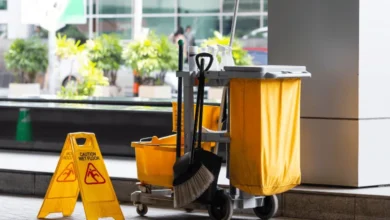Industrial Hygiene Mastery: Elevating Workplace Cleanliness and Safety

Industrial hygiene is a critical discipline that focuses on the anticipation, recognition, evaluation, and control of environmental factors arising in or from the workplace. It encompasses a plethora of activities essential to ensure the well-being and safety of employees in industrial settings. Such environments often require specialised cleaning practices, making industrial cleaning services the backbone of maintaining a healthy work atmosphere.
The Significance of Industrial Hygiene
The importance of industrial hygiene cannot be overstated. It plays a pivotal role in preventing occupational diseases and creating a safe workplace. Through the identification of potential hazards, whether chemical, physical, biological, or ergonomic, industrial hygienists are key players in ensuring that practices, systems, and controls are in place to reduce risks. This, in turn, translates to increased productivity and cost savings for businesses.
-
Components of Industrial Hygiene
Effective industrial hygiene is structured around several core components. The first is anticipation. By forecasting potential hazards that could arise during routine or non-routine operations, businesses can set preventative measures in motion.
Recognition entails correctly identifying existing or anticipated hazards. The evaluation process involves assessing the severity of identified hazards, often requiring precise measurements of exposure levels. Lastly, control refers to the strategies implemented to mitigate the risks associated with exposure to harmful elements.
-
Hazard Identification and Risk Assessment
Rigorous hazard identification forms the cornerstone of effective industrial hygiene. It requires comprehensive knowledge of processes and substances used in the workplace. Similarly, risk assessment goes hand-in-hand with hazard identification. It involves determining the likelihood of harm to workers and the possible severity of that harm. Understanding and applying these two processes is fundamental for maintaining a high standard of workplace safety.
-
Engineering Controls
One of the most effective means of controlling exposure to workplace hazards is through engineering controls. These are physical changes made to the workplace that could include the installation of exhaust ventilation to remove airborne contaminants or the use of wet methods to suppress dust. Engineering controls aim to eliminate the hazard at its source before it comes into contact with workers.
-
Work Practice Controls
Work practice controls involve the implementation of proper work procedures to reduce the duration, frequency, and degree of exposure to potential hazards. This includes regular maintenance and cleaning schedules to ensure that the workplace environment remains within acceptable levels of cleanliness and safety.
Industrial Cleaning Services: A Closer Look
For industrial settings, standard cleaning procedures often fall short. Specialised industrial cleaning services are needed to handle heavy-duty cleaning and decontamination. These services consider the unique challenges of industrial environments, such as the removal of industrial waste, chemical spills, and the cleanup of hazardous materials. Only through professional cleaning services can a company ensure compliance with health and safety regulations.
The Role of Professional Industrial Cleaners
Professional industrial cleaners bear the responsibility of thorough cleaning without disrupting the industrial processes. Their work encompasses everything from the high-pressure washing of plant and machinery to the de-greasing of production lines. Additionally, these experts are well-versed in the environmental guidelines regulating waste disposal, making them a crucial aspect of a company’s environmental management plan.
-
Training and Qualifications
Occupational standards dictate that industrial hygiene personnel, including cleaners, must be adequately trained and qualified to handle the complexities of industrial cleaning. Proper training ensures that they are capable of selecting and using the correct personal protective equipment (PPE), understanding Material Safety Data Sheets (MSDS), and employing the best practices for safe and effective cleaning.
-
Monitoring and Continuous Improvement
Beyond the employment of professional cleaning services lies the responsibility of continuous monitoring and improvement. Workplace cleanliness and safety are not static; they evolve with new processes, materials, and regulations. A commitment to ongoing evaluation and the refinement of hygiene practices is necessary to sustain industry standards.
-
Documentation and Compliance
Thorough documentation of cleaning processes, hygiene measures, and safety protocols supports a company’s compliance efforts. It’s integral for organisations to keep accurate records to demonstrate alignment with relevant health and safety guidelines. This is not only for regulatory bodies but also to assure employees of the commitment to their health and safety.
Conclusion
Industrial hygiene is the linchpin of workplace health and safety. It encompasses an expansive domain that shapes daily operations in every industrial setting. The deployment of professional industrial cleaning services marks a significant investment in this discipline.
These services not only contribute to a cleaner, safer work environment but also assist in meeting legal obligations and fostering employee morale. Mastery in industrial hygiene is an unceasing pursuit, navigating an elaborate network of hazards, controls, and practices to safeguard the workforce and the environment.
Accepting Industrial Hygiene and Cleaning Services
For businesses in the industrial sector, accepting industrial hygiene and cleaning services is not just a matter of compliance, it is about acknowledging the health of their workforce as a catalyst for productivity and success. By partnering with dedicated cleaning professionals and maintaining a rigorous hygiene monitoring system, industries can protect their employees and ensure optimal operational efficiency — encapsulating the essence of mastery in industrial hygiene.
Also read:






